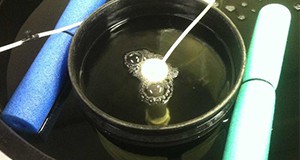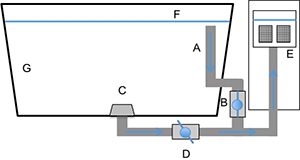As aquaculture production techniques streamline, interest in captive breeding for marine fish species increases. The food, ornamental, and bait industries all benefit from expanding the development of aquaculture techniques for desirable marine fish species. A significant limitation in developing aquaculture protocols for marine fish species is an adequate understanding of viable egg production and larval development. The first step in that process is to efficiently collect fertilized embryos, usually referred to as eggs, for examination and further development. This 6-page fact sheet written by Cortney Ohs, John Marcellus, Eric Cassiano, and Jason Broach and published by the UF/IFAS Program in Fisheries and Aquatic Sciences of the School of Forest Resources and Conservation includes directions for construction and operation of two types of pelagic egg collectors: pre-filter and floating airlift.
http://edis.ifas.ufl.edu/fa211
Tag: John Marcellus
Using Airlifts to Collect and Concentrate Copepod Nauplii

Airlifts are simple and inexpensive and not new to aquaculture. The buoyancy of rising bubbles within a pipe or tube generates an upward flow of water that are often used as part of water treatment design in recirculating aquaculture systems, but can also be used to collect and concentrate live food organisms fed to marine fish larvae. Airlifts are more gentle and efficient than sieving. This 3-page fact sheet provides protocols and designs for harvesting and feeding copepod nauplii to marine fish larvae, but these methods can be adapted for use with many live feed organisms. Written by Eric Cassiano, Matthew DiMaggio, Cortney Ohs, and John Marcellus, and published by the UF Department of Fisheries and Aquatic Sciences, May 2015. (Photo credit: Jason S. Broach)
http://edis.ifas.ufl.edu/fa188
